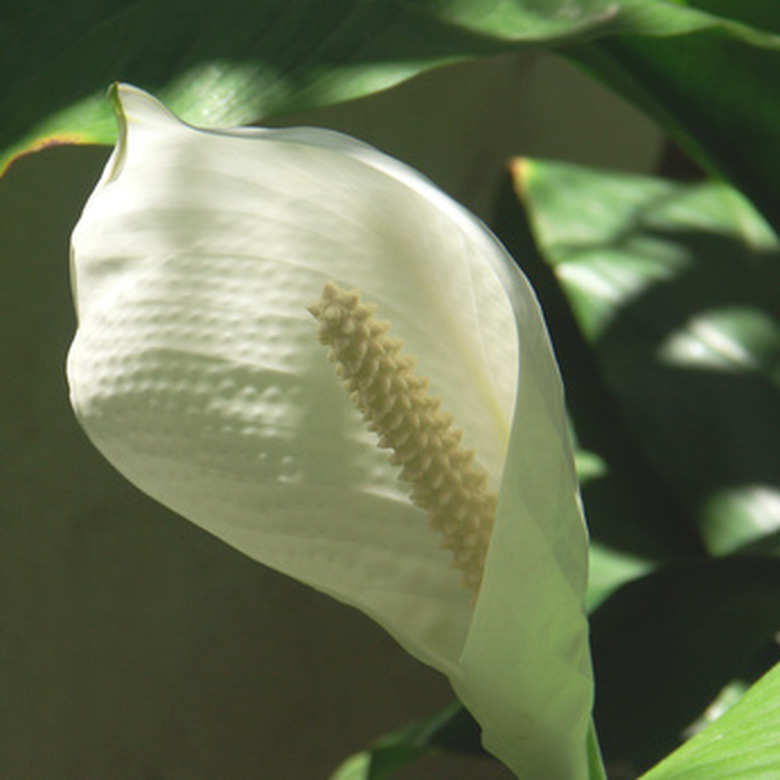Facts On Peace Lilies
Peace lilies (Spathiphyllum sp.) are native to tropical areas and tolerate very low levels of light. For this reason, they are extremely popular house plants. Peace lilies form attractive flower-like spaths, or enclosing sheaths, often year-round, which that fade from white to yellow over time. The plants are also great home air purifiers, known to remove small amounts of harmful chemicals from the environment.
Peace lilies (Spathiphyllum sp.) are native to tropical areas and tolerate very low levels of light. For this reason, they are extremely popular house plants. Peace lilies form attractive flower-like spaths, or enclosing sheaths, often year-round, which that fade from white to yellow over time. The plants are also great home air purifiers, known to remove small amounts of harmful chemicals from the environment.
Basic Growing Requirements
Peace lilies must grow away from direct sunlight, and under fairly humid conditions. Keep potting media most but well-drained. Ideal air temperatures range from 65 to 80 degrees F, as in a typical home. Natural home insecticides such as neem oil will control the typical pests that attack houseplants. These include mites, scale and mealybugs.
- Peace lilies (Spathiphyllum sp.)
- Peace lilies form attractive flower-like spaths, or enclosing sheaths, often year-round, which that fade from white to yellow over time.
History and Production
Commercial peace lily production has expanded rapidly since the 1970s, when just two varieties were widely grown. The University of Arkansas describes the spathiphyllum as a group of some "35 rhizomatous herbs" found in the wild on forest floors in Central and South America. A rhizome is an underground stem, from which new leaves and vertical stems emerge. While 'Clevelandii' is currently the most common variety, several new hybrids created in Germany are expected to surpass its popularity in the Florida foliage market as of 2010.
Air Cleaning Ability
All plants enhance the air for humans and animals by pulling carbon dioxide from the atmosphere and releasing oxygen. Peace lilies have been found to cleanse the air of many dangerous chemicals found in homes and offices, such as methyl, acetone, toluene, benzene and ammonia. They do this by trapping the chemicals in leaf pores and breaking them down. For optimum indoor air purification, about 10 or 12 peace lilies are recommended for a typical living room.
- Commercial peace lily production has expanded rapidly since the 1970s, when just two varieties were widely grown.
- For optimum indoor air purification, about 10 or 12 peace lilies are recommended for a typical living room.

